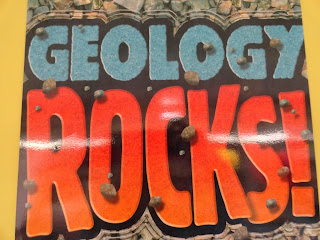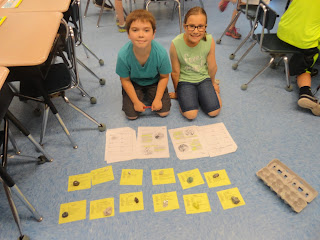The students were highly motivated and interested in our rocks and minerals science unit. We made some charts of what we think we know about rocks and what questions we have. We then became “geologists” and observed, described and recorded observations of 12 different rocks.
We looked at their physical properties, such as size, color, weight, texture and layering. We worked with our science partners and learned about the three types of rocks: igneous, sedimentary and metamorphic. After examining our rock specimens several times, we sorted them by different properties and then tried to place them in the correct rock type.
Next, we enjoyed some hands-on exploring of mineral specimens in order to compare and contrast rocks and minerals.
Our “Junior Geologists” arranged the 12 mineral samples in egg cartons and labeled them A-L. We performed many field tests on them in hopes of being able to correctly identify their names at the end of this unit. We have a sheet where we recorded the results of each test. We described the appearance, texture, smell (strong, mild or no odor), color streak, light (transparent, translucent or opaque), luster (metallic, waxy, glassy, dull), hardness (scratched with a penny or nail), magnetism, and shape of the crystals (using penlights and magnifying glasses). We are using these scientific terms. Next, we read a short passage about each mineral and highlighted important information and uses of each mineral. We then predicted which mineral we thought it was based on some of the field tests.
Identification day is always exciting and most of the students were able to correctly label each mineral specimen.
We also extended our learning with Reading Partnerships of Smart Word Learners such as Rocks and Minerals, Fossils, Caves, Earthquakes and Volcanoes.
Our Howe Caverns trip was a wonderful activity to examine some incredible rock and mineral formations and do some gem mining. Check out the pictures on the next post!


























No comments:
Post a Comment